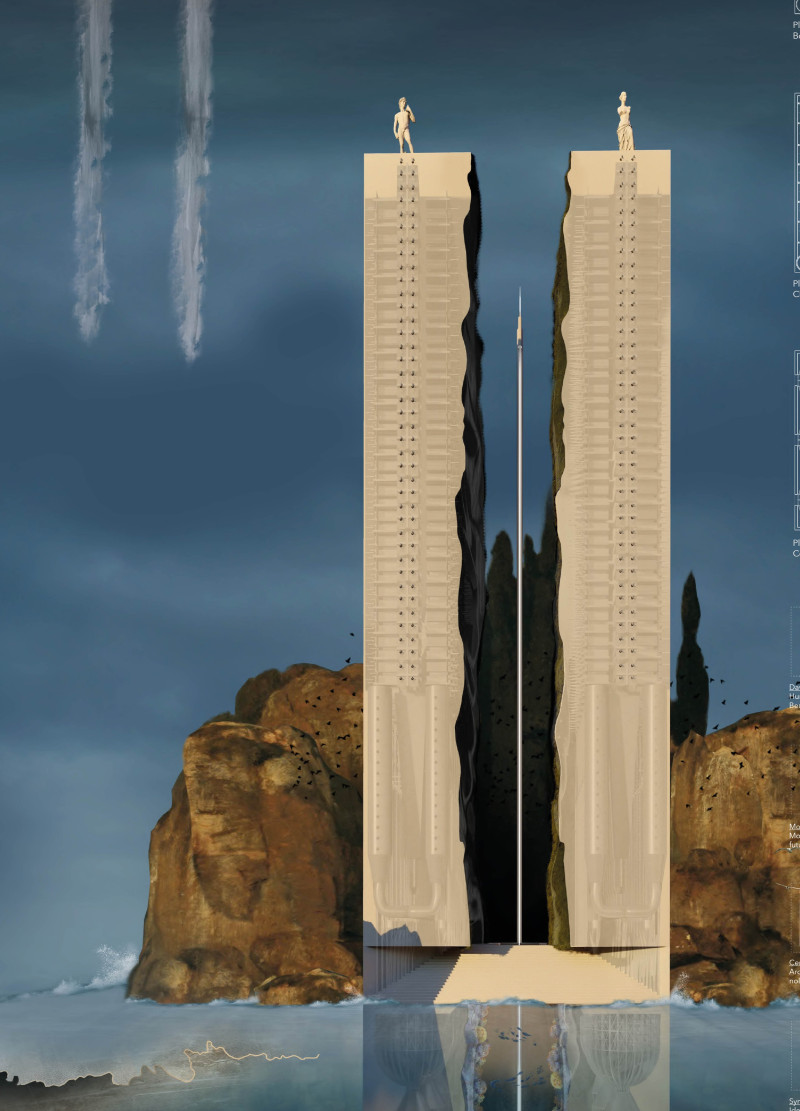5 key facts about this project
Design Representation and Functionality
The Pavilion represents a sanctuary that invites exploration and introspection. It functions as a space for gatherings, memorials, and individual reflection, fostering a dialogue between architecture and the essence of human experiences. The design facilitates various activities, including workshops, exhibitions, and quiet contemplation, making it a flexible venue that adapts to the needs of its users.
Distinctive features of the design include its anthropomorphic forms, which symbolize the human experience, and the innovative use of materials. The structure's integration within its site respects and enhances the environment, demonstrating a commitment to sustainable architectural practices.
Unique Design Approaches
The Pavilion utilizes a combination of reinforced concrete and glass, which allows for transparency and an abundance of natural light. This approach creates a seamless connection between interior and exterior spaces. The use of biological materials further distinguishes the project, reflecting a modern understanding of sustainability in architecture. The architectural language blends organic curves with modern structural elements, creating a dynamic visual presence.
Geotechnical innovation is a key aspect of the design, as it adapts to the natural terrain of the site. This ensures stability and minimizes environmental impact while maximizing the overall aesthetic appeal. Consideration for renewable energy sources, such as solar panels, highlights the project’s focus on sustainability and efficiency.
Spatial organization within the Pavilion is strategically designed to enhance user experience. Visitors are guided through a series of interconnected spaces, promoting interaction and visitor engagement. The design encourages movement through the Pavilion, leading to areas of reflection and contemplation, integrated within the natural landscape.
For deeper insights into the architectural intentions and practical aspects of the Pavilion of Humanity - First Contact, explore the architectural plans, architectural sections, and architectural designs presented in detail. These elements provide a comprehensive understanding of the project’s unique architectural ideas and their execution in practice.























